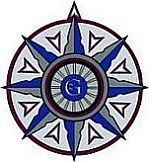I will be using a 12V compatable CPAP, perhaps a portable 12V Cooler/Refrigerator and an LED light in my Teardrop. I am debating with myself whether I need to purchase 1 6V deep cycle golf cart batteries, at $87 apiece (providing the deepest and most long lasting charge) or a single 12V battery. I plan to use an Progressive Dynamic Charger and my TV Generator to power the battery(s).
Any ideas?
Anyone run your CPAP off of a 12V deep cycle battery? How many hours have you gotten out of a 12V?
Thanks,
Iflyfishscratchingmyhead
Debating 2 6V vs 1 12V battery
22 posts
• Page 1 of 2 • 1, 2
Re: Debating 2 6V vs 1 12V battery
TLI (too little information).
If the cooler is a peltiaer type it will draw about about 4.5 A continuously (really battery draining). The CPAP is open to question but 2.5A was given as one example.
Similar results can be had from either set up, it is a matter of amp hours. Our Lifeline AGM is 150 AH. The Golf-cart batteries work, and well reportedly and are less expensive but they must be maintained water level...
If the cooler is a peltiaer type it will draw about about 4.5 A continuously (really battery draining). The CPAP is open to question but 2.5A was given as one example.
Similar results can be had from either set up, it is a matter of amp hours. Our Lifeline AGM is 150 AH. The Golf-cart batteries work, and well reportedly and are less expensive but they must be maintained water level...
-

Shadow Catcher - Donating Member
- Posts: 6008
- Images: 234
- Joined: Sat Apr 11, 2009 8:26 pm
- Location: Metamora, OH







 About the only things that kills them are accidents, and letting the plates get exposed to air. The main thing with them is keeping them topped off with deionized distilled water. They make this easy with a filling system that is easy to use. All the batteries in a bank are hooked together with tubes. When you pour water in the funnel, the cells are topped off one by one. When water flows out the exit tube, refilling is done.
About the only things that kills them are accidents, and letting the plates get exposed to air. The main thing with them is keeping them topped off with deionized distilled water. They make this easy with a filling system that is easy to use. All the batteries in a bank are hooked together with tubes. When you pour water in the funnel, the cells are topped off one by one. When water flows out the exit tube, refilling is done.